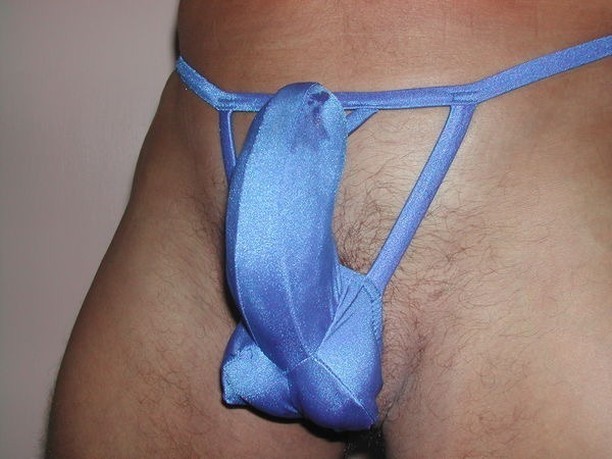The rise of men’s gay swimwear styles such as tiny bikinis and thongs becoming mainstream can be attributed to several cultural, social, and market-driven factors:

1. Changing Social Norms
- Body Positivity and Acceptance: Society has become more accepting of diverse body types and self-expression. Men feel more comfortable showcasing their bodies and embracing different swimwear styles.
- Breaking Gender Norms: The blurring of traditional gender roles and norms has led to a greater acceptance of fashion choices previously associated with women or the LGBTQ+ community.
2. Influence of LGBTQ+ Culture
- Visibility and Representation: The increased visibility of LGBTQ+ individuals in media and popular culture has normalized fashion choices that were once considered niche.
- Pride and Expression: Swimwear associated with gay culture often emphasizes boldness and confidence, encouraging men to express their individuality.
3. Fashion Industry Evolution
- Design Innovations: Designers are constantly exploring new styles and pushing boundaries. The inclusion of gay swimwear styles in mainstream collections showcases creativity and diversity.
- Marketing Strategies: Brands are targeting a broader audience, recognizing the purchasing power of LGBTQ+ consumers and those who admire these styles.
4. Celebrity and Influencer Impact
- Influencer Culture: Social media influencers and celebrities often set fashion trends. When they embrace daring swimwear styles, their followers are more likely to adopt these trends.
- Celebrity Endorsements: High-profile endorsements and appearances in media wearing these styles contribute to their mainstream acceptance.
5. Comfort and Practicality
- Comfort and Fit: Many men find that bikinis and thongs provide better comfort and fit, particularly for athletic or beach activities.
- Functionality: These styles can be more practical for sunbathing, swimming, and minimizing tan lines.
6. Globalization and Cultural Exchange
- Cultural Influence: Exposure to global fashion trends and styles has led to a fusion of different cultural elements, making once regional or niche styles more universally accepted.
- Travel and Tourism: Increased travel and exposure to diverse beach cultures have influenced men’s swimwear choices.
7. Economic Factors
- Market Demand: As demand for diverse swimwear styles grows, manufacturers and retailers respond by offering a wider range of options.
- Competitive Market: The swimwear market is highly competitive, and brands innovate to capture consumer interest and market share.
8. Empowerment and Confidence
- Self-Expression: Wearing bold and revealing swimwear styles can be a form of self-expression and empowerment, allowing men to embrace their sexuality and personal style.
- Confidence Boost: Many men feel more confident and attractive in swimwear that showcases their physique, contributing to a positive body image.
9. Health and Fitness Trends
- Fitness Culture: The rise of fitness culture and the emphasis on maintaining a toned physique have made men more inclined to wear swimwear that highlights their bodies.
- Health Awareness: Awareness of the health benefits of sun exposure, combined with the desire to avoid tan lines, has made minimal swimwear styles more appealing.
10. Media and Pop Culture
- TV Shows and Movies: Popular media, including TV shows and movies, often depict characters in fashionable swimwear, influencing public perception and acceptance.
- Music Videos: Music videos frequently feature artists and dancers in bold swimwear, further normalizing these styles.
11. Technological Advancements
- Fabric Innovations: Advances in fabric technology have led to the development of more comfortable, durable, and versatile swimwear materials.
- Design Customization: Technology allows for greater customization in swimwear design, catering to individual preferences and body types.
12. Fashion Cycles
- Retro Revival: Fashion trends are cyclical, and the resurgence of retro styles often brings back elements from past decades, including bold swimwear designs.
- Trend Adaptation: Designers and brands adapt trends from other fashion segments, integrating them into swimwear collections.
13. Gender Fluidity and Inclusivity
- Non-Binary Fashion: The rise of non-binary and gender-fluid fashion has led to a more inclusive approach to design, blurring the lines between traditionally male and female styles.
- Unisex Collections: Many brands now offer unisex swimwear collections, further promoting the acceptance of diverse styles.
14. Consumer Feedback and Influence
- Consumer Demand: Direct feedback from consumers who prefer bold and unique swimwear styles has influenced brands to diversify their offerings.
- Online Reviews and Ratings: Positive reviews and high ratings for these styles online encourage other consumers to try them.
15. Fashion Week and Runway Trends
- Runway Influence: High fashion runway shows often set the tone for upcoming trends, including swimwear, with many designers showcasing daring and unconventional styles.
- Fashion Weeks: Events like Fashion Week provide a platform for designers to introduce innovative swimwear designs, influencing mainstream fashion.
16. Retail and E-commerce Evolution
- E-commerce Growth: The growth of online shopping has made it easier for consumers to explore and purchase a wide variety of swimwear styles.
- Niche Marketplaces: Specialized online marketplaces cater to niche fashion interests, including men’s gay swimwear, making these styles more accessible.
The combination of these factors has created an environment where men’s gay swimwear styles are no longer confined to a niche market but are embraced by a broader audience. This evolution reflects the dynamic nature of fashion and the ongoing shifts in societal attitudes towards gender, sexuality, and personal expression.